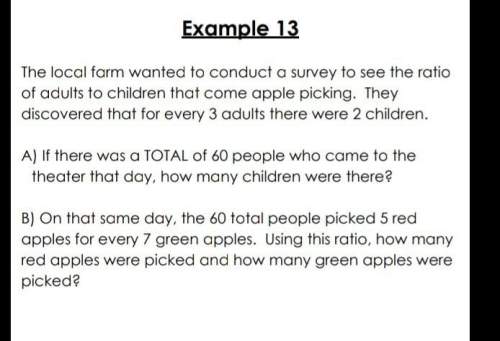
Mathematics, 02.12.2021 23:20 misrachel03
PART A: The year in which the us civil war ended was 25 percent later than the year Christopher Columbus set sail from Spain. If c represents the year Columbus set sail, we can write the year the civil war ended as c+0.25c. Rewrite this expression as a single term.
PART B: Rewrite the expression C+0.25c using fractions instead of decimal numbers.
PART C: Rewrite the expression you developed in part B as a single term with fractional coefficient.
PART D: Are the expressions you developed in part A and part C the same? Why or why not?
PART E: Christophe Columbus set sail from Spain in 1492. In what year did the civil war end?
PART F: The year the Greek city of Helike disappeared is - 1/5 times the year the US Civil war ended. Let W represent the year the Civil war ended. Write an expression in terms of W to represent the year of Helike’s disappearance.
PART G: Use the results from part E and part F to determine the year Helike disappeared. Express your answer in terms of BC or AD.
PART H: Using the results from parts D through G, write an expression that represents the number of years elapsed between the disappearance of the
Greek city of Helike and the end of the US Civil War. Write the expression in terms of c and w. Then solve the expression to find out how many
years separate these two events.

Answers: 1


Another question on Mathematics

Mathematics, 21.06.2019 16:30
In two or more complete sentences describe how to determine the appropriate model for the set of data, (1,1), (3,2), (6,3), (11,4).
Answers: 1

Mathematics, 21.06.2019 17:00
In tossing one coin 10 times, what are your chances for tossing a head? a tail? 2. in tossing one coin 100 times, what are your chances for tossing a head? a tail? 3. in tossing one coin 200 times, what are your chances for tossing a head? a tail? deviation = ((absolute value of the difference between expected heads and observed heads) + (absolute value of the difference between expected tails and observed tails)) divided by total number of tosses. this value should always be positive. 4. what is the deviation for 10 tosses? 5. what is the deviation for the 100 tosses? 6. what is the deviation for 200 tosses? 7. how does increasing the total number of coin tosses from 10 to 100 affect the deviation? 8. how does increasing the total number of tosses from 100 to 200 affect the deviation? 9. what two important probability principles were established in this exercise? 10. the percent of occurrence is the obtained results divided by the total tosses and multiplied by 100%. toss the coins 100 times and record your results. calculate the percent occurrence for each combination. percent head-head occurrence: percent tail-tail occurrence: percent head-tail occurrence:
Answers: 3


Mathematics, 21.06.2019 21:30
*let m∠cob = 50°30’, m∠aob = 70° and m∠aoc = 20°30’. could point c be in the interior of ∠aob? why? a. point c could be the interior of aob but it is not the only case b. point c is the interior of aob c. point c is not the interior of aob d. the given is not possible for the plane geometry answer
Answers: 1
You know the right answer?
PART A: The year in which the us civil war ended was 25 percent later than the year Christopher Colu...
Questions










Mathematics, 16.10.2019 07:00

English, 16.10.2019 07:00

Mathematics, 16.10.2019 07:00

History, 16.10.2019 07:00

Mathematics, 16.10.2019 07:00



Chemistry, 16.10.2019 07:00



English, 16.10.2019 07:00




